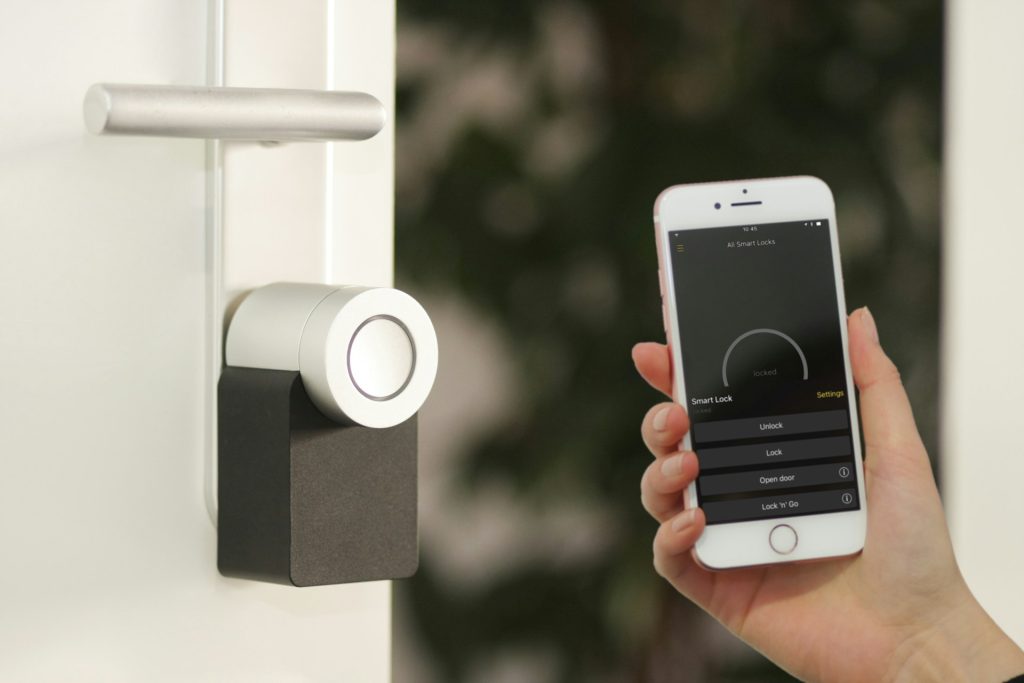
Image Source: unsplash.com
Traditional door locks have served us well for decades, but in today’s world, they’re increasingly vulnerable to break-ins. Modern burglars have become more sophisticated, using techniques like lock bumping, picking, and even key duplication to bypass conventional locks. If you’re serious about protecting your home, it’s time to upgrade to more secure alternatives. Here are five burglar-resistant options that provide superior protection for your home.
1. Biometric Fingerprint Smart Locks: Security at Your Fingertips
Biometric fingerprint locks represent a significant leap forward in home security technology. Unlike traditional locks that rely on keys that can be lost or duplicated, these systems use your unique fingerprint as the key.
Modern fingerprint locks feature advanced sensors that create detailed digital maps of authorized fingerprints, making them nearly impossible to fool. Many models include anti-tamper alarms that activate if someone attempts to force the lock. With no keyholes to pick and the ability to store multiple fingerprints, these locks offer convenience without compromising security.
The technology has improved dramatically in recent years, with sensors that can read fingerprints even when they’re slightly dirty or wet. Most systems also include backup methods like PIN codes or physical keys for emergencies, ensuring you’re never locked out of your home.
2. Palm Vein Recognition Locks: The Next Generation of Biometrics
Palm vein recognition locks take biometric security to the next level. They use infrared light to map the unique vein patterns beneath your skin. This technology, featured in locks like the eufy FamiLock S3 Max, offers several advantages over traditional fingerprint scanning.
Palm vein patterns are internal to your body, making them virtually impossible to replicate or forge. Unlike fingerprints, which can potentially be lifted from surfaces, vein patterns remain hidden and secure. The technology works reliably regardless of skin surface conditions like cuts, dirt, or oils.
These systems typically feature fast recognition speeds of less than a second and can be integrated with smartphone apps for remote management. While relatively new to the residential market, palm vein technology has been used in high-security commercial applications for years, proving its effectiveness against unauthorized access attempts.
3. Smart Locks with Ultra-Wideband Technology: Hands-Free Security
Ultra-wideband (UWB) smart locks represent the cutting edge of convenient security. These innovative locks, like the Schlage Sense Pro Smart Deadbolt showcased at CES 2025, can detect when an authorized smartphone or smartwatch is approaching your door with centimeter-level accuracy.
The lock automatically unlocks as you approach and relocks after you enter, eliminating the need to fumble with keys or even touch the lock. UWB technology is more precise than Bluetooth or Wi-Fi, preventing accidental unlocking from inside your home or from someone passing by outside.
These systems typically include multiple authentication methods, including PIN codes and NFC cards as backups. Many also feature tamper alerts that notify you immediately if someone attempts to force entry, giving you time to contact authorities before a break-in occurs.
4. Multi-Function Video Smart Locks: Security You Can See
Video smart locks combine several security technologies into one powerful package. Models like the TCL Smart Lock D1 Ultra integrate a smart lock, security camera, video doorbell, and display screen into a single unit.
These comprehensive systems allow you to see who’s at your door before unlocking it, record footage of visitors or potential intruders, and even communicate with delivery personnel without opening the door. The built-in cameras typically feature high-resolution video (often 2K) with wide-angle lenses and night vision capabilities.
Most video smart locks offer multiple unlocking methods, including fingerprint scanning, PIN codes, smartphone apps, and physical keys. The integration with home security systems provides an additional layer of protection, as attempted break-ins trigger both local alarms and notifications to your smartphone.
5. High-Security Mechanical Deadbolts: Traditional Security Reimagined
Modern high-security deadbolts offer significantly more protection than standard locks for those who prefer mechanical solutions. These advanced mechanical locks, like those from Kwikset’s Juno series, feature drill-resistant cylinders, reinforced strike plates, and pick-resistant designs.
The best models use patented key systems that prevent unauthorized duplication, a common security vulnerability with traditional locks. Many incorporate hardened steel components that resist sawing, drilling, and prying attempts.
Installation is crucial for these locks—using 3-inch screws to secure the strike plate to the door frame dramatically increases kick-in resistance. Some models also feature anti-bump technology that prevents a common technique burglars use to defeat standard pin tumbler locks.
Securing Your Home Beyond the Lock
While upgrading your door locks is essential, remember that comprehensive home security requires a layered approach. Consider reinforcing door frames, installing security cameras, and using smart lighting systems that simulate occupancy when you’re away.
The best security solution combines physical barriers with modern technology to create a system that deters burglars before they attempt entry. By replacing your outdated locks with one of these burglar-resistant alternatives, you’re taking a significant step toward creating a safer home for you and your family.
Have you upgraded your home’s door locks recently? What security features do you consider most important for protecting your property? Share your thoughts in the comments below!
Read More
Security Features in Printing Platforms: Keeping Your Data Safe
Why Criminals Are Placing USB Drives in Public Spaces and the Risks You Face
Leave a Reply